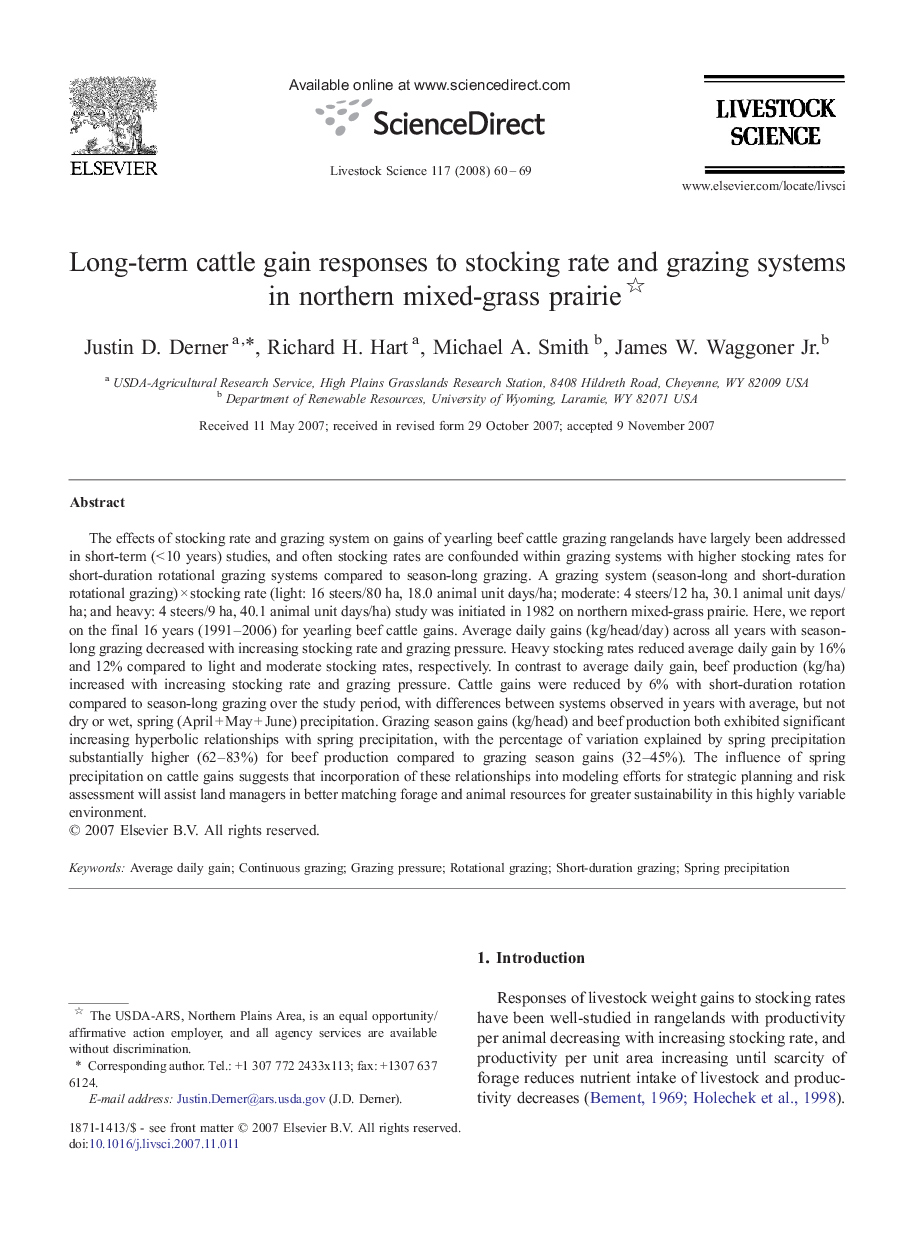| کد مقاله | کد نشریه | سال انتشار | مقاله انگلیسی | نسخه تمام متن |
|---|---|---|---|---|
| 2448481 | 1109550 | 2008 | 10 صفحه PDF | دانلود رایگان |

The effects of stocking rate and grazing system on gains of yearling beef cattle grazing rangelands have largely been addressed in short-term (< 10 years) studies, and often stocking rates are confounded within grazing systems with higher stocking rates for short-duration rotational grazing systems compared to season-long grazing. A grazing system (season-long and short-duration rotational grazing) × stocking rate (light: 16 steers/80 ha, 18.0 animal unit days/ha; moderate: 4 steers/12 ha, 30.1 animal unit days/ha; and heavy: 4 steers/9 ha, 40.1 animal unit days/ha) study was initiated in 1982 on northern mixed-grass prairie. Here, we report on the final 16 years (1991–2006) for yearling beef cattle gains. Average daily gains (kg/head/day) across all years with season-long grazing decreased with increasing stocking rate and grazing pressure. Heavy stocking rates reduced average daily gain by 16% and 12% compared to light and moderate stocking rates, respectively. In contrast to average daily gain, beef production (kg/ha) increased with increasing stocking rate and grazing pressure. Cattle gains were reduced by 6% with short-duration rotation compared to season-long grazing over the study period, with differences between systems observed in years with average, but not dry or wet, spring (April + May + June) precipitation. Grazing season gains (kg/head) and beef production both exhibited significant increasing hyperbolic relationships with spring precipitation, with the percentage of variation explained by spring precipitation substantially higher (62–83%) for beef production compared to grazing season gains (32–45%). The influence of spring precipitation on cattle gains suggests that incorporation of these relationships into modeling efforts for strategic planning and risk assessment will assist land managers in better matching forage and animal resources for greater sustainability in this highly variable environment.
Journal: Livestock Science - Volume 117, Issue 1, August 2008, Pages 60–69